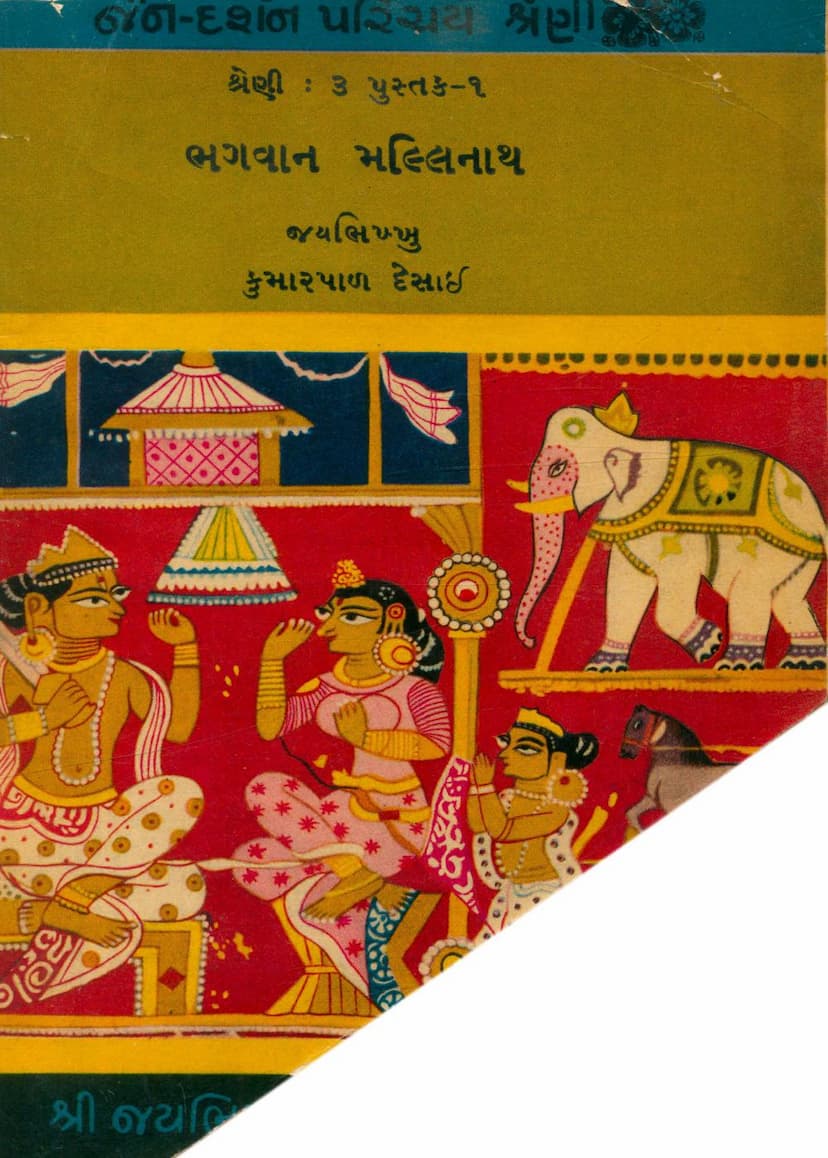Bhagwan Mallinath
Added to library: September 1, 2025

Summary
This document is the first book in the third series of the "Jain Darshan - Parichay Shreni" (Introduction to Jain Philosophy Series), titled "Bhagwan Mallinath" by Kumarpal Desai, published by Shri Jaybhikhu Sahitya Trust.
The book is dedicated to U. N. Mehta and Shardaben Ch. Mehta. The preface highlights the series' aim to provide an understanding of Jain philosophy and the personalities who shaped lives through it. It acknowledges the challenges in interpreting religion amidst ritualism and self-interest and expresses hope that this series, focusing on the lives of religious figures, will be well-received. The publishers also mention receiving support from Torrent Laboratories and various organizations like Vedamber Murtipujak Jain Bending.
The book then introduces Bhagwan Mallinath, the 19th Tirthankar. The narrative begins with the birth of Mallika Kumara in Mithila, daughter of King Kumbha and Queen Dharini. Despite being born into a royal family filled with luxury and desire, Mallika possessed immense spiritual and physical beauty. The text emphasizes that true greatness lies in the soul and not in gender or worldly status.
The early chapters describe Princess Mallika's extraordinary beauty, which attracted numerous royal suitors from various kingdoms like Avanti, Madra, Kashi, Koshal, and Magadh. The descriptions of her beauty are poetic and evocative, captivating the visiting princes and ambassadors. A famous artist, Vasantasen, is commissioned to paint her portrait, but upon seeing her, he is so overwhelmed by her divine radiance that he abandons his artistic pursuits to meditate on her image.
The story then delves into the social and political climate of the time, where men indulged in sensual pleasures and women were often confined by societal norms. Princess Mallika, however, possessed a unique perspective. She expressed her desire to rule not over land but over people's hearts, establishing an empire of contentment, non-violence, and truth. Her brother, Prince Mall, also supported her spiritual aspirations.
The narrative highlights the arrival of messengers from six kings who sought Princess Mallika's hand in marriage. These kings, including the rulers of Hastinapur, Saketpur, Champa, Kashi, Koshal, and Kurunjala, were all captivated by her reported beauty. However, Princess Mallika, who had taken a vow of celibacy and aimed for spiritual liberation, rejected all proposals.
To dissuade the persistent kings, Princess Mallika devised a plan. She had a life-sized statue of herself created and invited the kings to a "magic temple" she had built. Inside the temple, the kings were led to separate chambers, and then the central chamber was opened, revealing the stunning statue of Mallika. The overwhelming fragrance emanating from the statue, caused by the accumulation of food that she had been feeding it daily for a few days, made the kings recoil. Princess Mallika then revealed the truth: the statue, and by extension, all physical beauty, was merely a temporary vessel filled with decaying matter. She explained that true beauty and lasting happiness reside within the soul and are achieved through spiritual practice, renunciation, and compassion.
The kings, initially infatuated with the physical beauty, were humbled by her profound wisdom. They realized the futility of their worldly desires and the emptiness of pursuing fleeting physical attractions. Influenced by her teachings and the remembrance of their past lives together as seven friends, they renounced their worldly possessions and followed Princess Mallika on the path of spirituality.
The book concludes by stating that Princess Mallika attained Omniscience (Kevalgnan) on the eleventh day of the bright half of the month of Phalgun. She lived as a Tirthankar for 55,900 years and attained Moksha (liberation) on the twelfth day of the bright half of Phalgun at Sametshikhar mountain. It also notes the divergence in beliefs between Jain sects regarding Mallinath's gender, with the Digambar tradition considering Mallinath as male.
The book is part of a series aiming to educate readers about Jain philosophy and the lives of its influential figures.